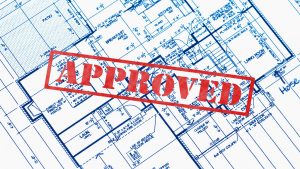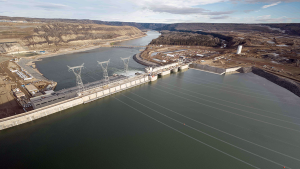The DVP is indelibly stamped on the heart of the city as its major central north-south arterial. This year it celebrates the 50th anniversary of the completion of the first section between Bloor St. East and Eglinton Ave East.
To most Torontonians, the Don Valley Parkway is a seamless ribbon of asphalt joining the 401 in the north to the Gardiner Expressway in the south.
Others see it as a commuter nightmare which turns into a parking lot in rush hour or at the first hint of bad weather.
Few people, however, realize what an impact it had on the Don Valley itself and to east-west transportation infrastructure.
Either way the DVP is indelibly stamped on the heart of the city as its major central north-south arterial and this year it celebrates the 50th anniversary of the completion of the first section between Bloor St. East and Eglinton Ave East. It even opened with a traffic jam.
The downtown expressway had been on the books since 1954 when the various boroughs formed Metropolitan Toronto. Construction of the roadway began in 1958.
Sam Cass, Commissioner of Traffic Engineering from 1954 to 1978 and Commissioner of Roads and Traffic from 1978 to 1989, recalls the initial reactions to the project.
“Toronto has a reputation for being opposed to any kind of change, and this project was no exception,” says Cass.
“The biggest argument was that we would destroy the nature of the valley. I had to get into the valley to look around before construction and it was virtually impossible to get down there — it would have taken a mountain climber to get through it.
The valley was being used as a rubbish dump and was full of mattresses and broken furniture littered all over the place.
It was virtually a no-man’s land. In fact, part of the road construction project included creation of parkland, park access and the construction of bicycle routes through the valley.”
Land swaps between Metro and the City of Toronto helped to establish a route that largely followed publicly owned property and maintained the acreage of existing park land.
New York engineering firm Fenco-Harris, fresh from designing the Alaska Expressway, designed the DVP in tandem with a Toronto firm, Foundation Engineering.
Preparation for construction involved excavating years of trash and then engineering the valley to accept the new roadway.
Two hills were removed from the valley and used to flatten the valley surface, with a total of 4.6 million cubic metres of soil excavated and 1.25 million cubic metres of soil used as fill.
More than three kilometres of the Don River was rerouted and retaining walls were built along 1.6 kilometres of the steeper portions of the valley.
In addition, crews removed five isolated homes expropriated to accommodate the new route.
“They were given the option of being bought out entirely, or of having their homes literally moved to a new location,” says Cass. “One of them actually opted to have their home moved to Scarborough.”
Cass recalls assigning three construction companies to complete the work in order to meet the project deadlines.
“People today may have no idea how important this project was to traffic flow,” he says.
“There were hardly any places where you could cross the Don Valley north of Bloor. You had to go up to Steeles for the next crossing. Part of the DVP plan was to actually build the bridges for streets such as Eglinton and Lawrence to cross the valley.”
The first section of the parkway, from Bloor Street to Eglinton Avenue, was opened on August 31, 1961 by Ontario Premier Leslie Frost and Metro Chairman Fred Gardiner. The city’s traffic patterns changed permanently that day.
“It was a hell of a big difference,” recalls Cass. “The day the roadway was opened it was all filled up and the adjacent roadways were just about empty. Drivers really took to it.”
The DVP also experienced its first traffic jam that same day, although it wasn’t unexpected, says Cass. The new parkway had only two access points at the time because the Don Mills Road exit didn’t yet exist.
Traffic piled up at the Eglinton exit as drivers rushed uptown.
Congestion eased as the new sections of the DVP were completed.
The Eglinton to Lawrence Avenue section began construction in July, 1961 and was completed on October 30, 1963.
The section connecting Bloor to the Gardiner Expressway was completed on November 6, 1964. The Lawrence to Sheppard Avenue stretch was completed on November 17, 1966.
“We were getting faster and faster as the project neared completion,” says Cass.
Total then-current construction costs: $40 million — more than $270 million in today’s dollars.
Cass notes that the DVP was never intended to support its current level of traffic for five decades.
Plans for a proposed Spadina Expressway and Scarborough Expressway, which would have shared the traffic burden, were scrapped.
Driving along the DVP today, Cass says that his relationship with the Toronto landmark is typical of many engineers.
“The funny thing is that you don’t derive a sense of ownership from overseeing the project,” he says.
“But every time something goes wrong, or there’s a traffic delay you feel responsible.”










Recent Comments
comments for this post are closed